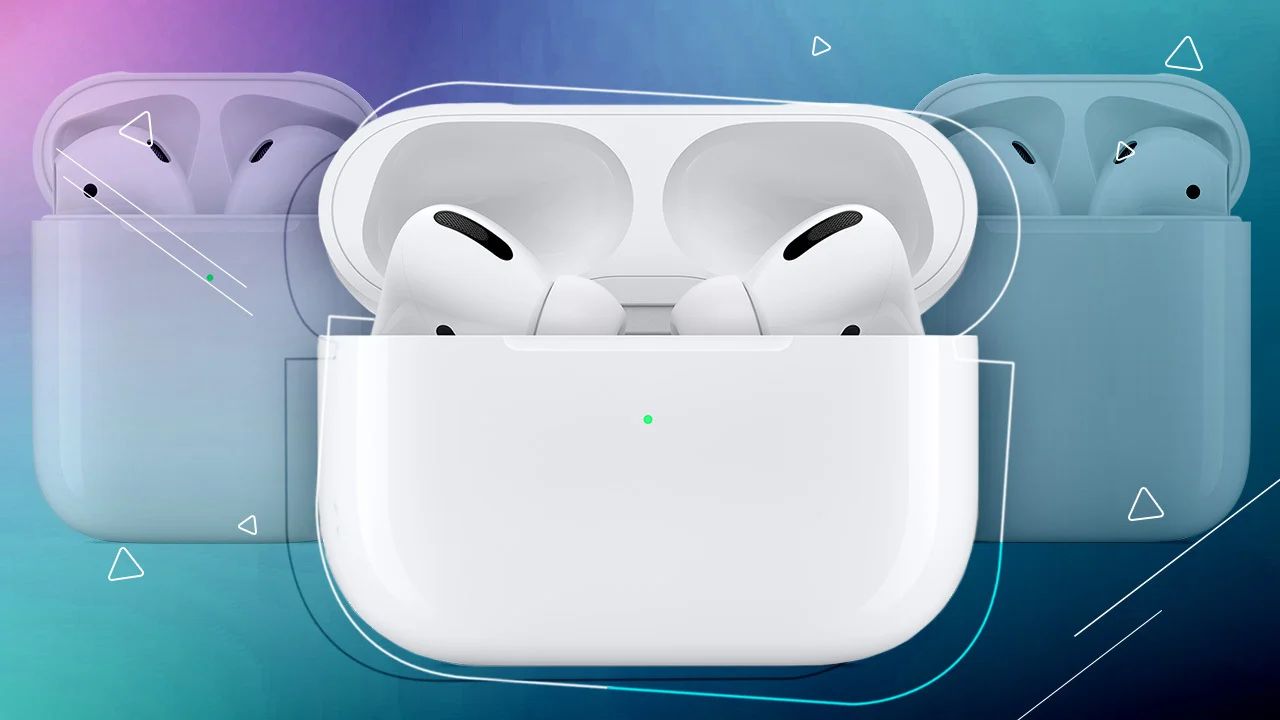Introduction
Welcome to the world of noise cancellation and transparency! As technology continues to advance, so does our ability to control the sound environment around us. Whether you’re commuting in a noisy city, working in a bustling office, or simply trying to relax at home, having the option to switch between noise cancellation and transparency can make a world of difference.
Noise cancellation refers to the ability of a device to actively reduce or eliminate unwanted ambient sounds. By analyzing the incoming audio signals and generating inverse sound waves, noise cancellation technology effectively cancels out the external noise, allowing you to immerse yourself in your music, podcast, or phone call without distractions.
On the other hand, transparency mode lets you stay connected to your surroundings by allowing certain sounds to pass through your headphones. This is especially useful when you need to be aware of your surroundings, such as when crossing the street or having a conversation with someone.
In this article, we will explore how to switch between noise cancellation and transparency on different devices. Whether you own an iPhone, an Android device, or wireless headphones, we’ve got you covered. We will also provide some tips for optimizing your noise cancellation or transparency experience. So, let’s dive in and discover how you can take control of your sound environment!
What is Noise Cancellation and Transparency
Noise cancellation and transparency are two features that aim to enhance your audio experience in different ways.
Noise cancellation, as the name suggests, is a technology that helps to eliminate or reduce unwanted external noise. It uses microphones to detect ambient sounds and then generates sound waves that are the exact opposite of the detected noise. When these sound waves mix with the external noise, they cancel each other out, resulting in a quieter environment for the listener.
This technology is particularly beneficial in environments with high levels of background noise, such as airplanes, trains, or bustling city streets. By reducing or eliminating the external noise, noise cancellation allows you to focus on the audio you want to hear, whether it’s your favorite music, a podcast, or a phone conversation.
Transparency, on the other hand, is a feature that lets you stay connected to your surroundings while wearing headphones. It allows certain sounds to pass through so that you remain aware of what’s happening around you. This is especially useful in situations that require situational awareness, such as when walking in busy areas, working in an office, or simply wanting to have a conversation without constantly removing your headphones.
With transparency mode activated, you can enjoy the benefits of wearing headphones, such as improved sound quality and immersive audio, while still being able to hear important sounds, like sirens, doorbells, or someone calling your name.
Both noise cancellation and transparency modes can greatly enhance your audio experience and provide flexibility for different situations. Whether you need peace and quiet or want to stay connected to your surroundings, having the ability to switch between these modes offers versatility and convenience.
Understanding the Difference Between Noise Cancellation and Transparency
While noise cancellation and transparency may seem similar, there are some key differences between the two features.
Noise cancellation works by actively reducing or eliminating external noise. It uses advanced algorithms and microphones to detect ambient sounds and then produces sound waves that are the exact opposite of those detected noises. These sound waves, also known as anti-noise, are mixed with the external noise, effectively canceling it out and creating a quieter environment for the listener.
Transparency mode, on the other hand, allows certain external sounds to pass through your headphones. It provides a level of awareness of your surroundings while still wearing headphones. Transparency mode is achieved by utilizing external microphones that capture the ambient sounds and feed them into your headphones, alongside the audio you’re currently listening to.
The main difference between the two features lies in their purpose and functionality. Noise cancellation aims to provide a more immersive audio experience by reducing unwanted background noise. It’s perfect for situations where you want to block out distractions and focus on the audio content of your choice, whether it’s music, podcasts, or phone calls.
Transparency mode, on the other hand, prioritizes awareness and safety. It allows you to listen to your audio while still being able to hear important sounds from your surroundings. This feature is particularly useful in situations where you need to maintain situational awareness, such as walking in a busy street, working in an office, or having a conversation with someone.
Another distinction between noise cancellation and transparency is the level of control you have over your environment. With noise cancellation, you can completely block out or significantly reduce external sounds, creating a more isolated and focused listening experience. Transparency mode, on the other hand, gives you the ability to blend the audio from your device with the surrounding sounds, allowing you to stay engaged with your environment while still enjoying your audio content.
It’s important to understand the differences between these two features so that you can choose the one that best suits your needs in different situations. Whether you want to immerse yourself in audio or maintain awareness of your surroundings, noise cancellation and transparency offer versatile options to enhance your overall listening experience.
Why Switch Between Noise Cancellation and Transparency
Switching between noise cancellation and transparency modes can greatly benefit you in various scenarios, depending on your needs and preferences.
There are several reasons why you might want to switch between these two features:
1. Versatility: Noise cancellation and transparency offer different levels of control over your audio environment. Noise cancellation allows you to block out unwanted distractions and immerse yourself in your audio content, providing a more focused listening experience. On the other hand, transparency mode enables you to stay connected to your surroundings, ensuring you remain aware of important sounds. By having the ability to switch between these modes, you can adapt to different situations effectively.
2. Safety: Transparency mode plays a crucial role in maintaining situational awareness and safety. In environments where you need to be aware of your surroundings, such as when walking in a busy area or working in an office, transparency mode can help you hear important signals, such as sirens or people talking to you, while still enjoying your audio. Switching to transparency mode ensures you don’t miss out on crucial information or put yourself at risk.
3. Social Interaction: When you’re wearing headphones, it can be challenging for others to get your attention or engage in a conversation. By switching to transparency mode, you can easily listen to your audio while still being receptive to those around you. Whether it’s at work, in a social setting, or during your daily commute, transparency mode allows you to enjoy your audio while remaining open to interactions with others.
4. Personal Preference: Everyone has different preferences and comfort levels when it comes to their audio environment. Some may prefer the quiet and immersive experience that noise cancellation offers, while others may prioritize staying connected to their surroundings with transparency mode. By being able to switch between these features, you can customize your audio experience based on your current mood and preference.
Ultimately, the decision to switch between noise cancellation and transparency depends on your specific needs and the context in which you find yourself. Both features offer distinct advantages and can enhance your audio experience in different ways. Having the flexibility to switch between them gives you greater control over your listening environment, ensuring you can enjoy your audio while staying aware of your surroundings and engaging with others when needed.
Devices That Support Noise Cancellation and Transparency
Noise cancellation and transparency features are available on various devices, allowing you to enjoy these functionalities across different platforms. Here are some of the devices that support noise cancellation and transparency:
1. Smartphones: Many modern smartphones, such as the iPhone and Android devices, come equipped with built-in noise cancellation and transparency features. These features can be accessed through the device’s settings or through dedicated apps provided by the manufacturer. By enabling these features on your smartphone, you can optimize your audio experience and control the level of noise cancellation or transparency to suit your preferences.
2. Wireless Headphones: Numerous wireless headphones and earbuds on the market offer noise cancellation and transparency functionalities. Leading brands like Apple, Sony, Bose, and Jabra incorporate advanced noise cancellation technology into their wireless headphone models. With the ability to switch between noise cancellation and transparency modes, these headphones give you the flexibility to adapt to different listening environments and ensure you have the best audio experience possible.
3. True Wireless Earbuds: True wireless earbuds have also embraced noise cancellation and transparency features. Well-known brands like Apple, Samsung, JBL, and Sennheiser offer true wireless earbuds with noise cancellation capabilities. These compact earbuds provide a portable and convenient option for enjoying your audio while still having control over your surrounding sound environment.
4. Wired Headphones: Even some wired headphones offer noise cancellation and transparency features. Certain models from brands like Sennheiser, JBL, and Audio-Technica come equipped with active noise cancellation technology. These headphones use a wired connection and built-in microphones to analyze and counteract external noise, providing an immersive listening experience in any setting.
5. Smart Speakers: Noise cancellation and transparency features are not limited to personal audio devices alone. Some smart speakers, like the Apple HomePod and Amazon Echo Studio, come equipped with built-in noise cancellation or transparency functionality. This allows you to enjoy high-quality audio while maintaining awareness of your surroundings, particularly useful during voice interactions and smart home control.
With the growing demand for noise cancellation and transparency, more and more devices are being developed to incorporate these features. Whether it’s your smartphone, wireless headphones, true wireless earbuds, wired headphones, or smart speakers, you can find a wide range of devices that support noise cancellation and transparency, giving you the ability to personalize your audio experience and enjoy your favorite content without compromise.
How to Switch Between Noise Cancellation and Transparency on iPhone
If you own an iPhone, you have access to intuitive controls that allow you to easily switch between noise cancellation and transparency modes. Follow these steps to customize your audio experience:
1. Open Control Center: Swipe down from the top-right corner of your iPhone’s screen to access the Control Center.
2. Locate the Volume Widget: In the Control Center, you’ll find the volume widget, represented by a speaker icon.
3. Long-Press on the Volume Widget: Press and hold the volume widget to expand it and reveal additional audio control options.
4. Explore Noise Cancellation and Transparency Modes: Within the expanded volume widget, you’ll see two buttons: one with the symbol of an ear and one with the symbol of an ear surrounded by circles. The first button represents noise cancellation mode, while the second button represents transparency mode.
5. Switch Between Modes: To switch between noise cancellation and transparency modes, simply tap on the respective button within the volume widget. This will toggle the mode on or off, depending on the current state.
6. Adjust the Intensity: For some iPhone models, you can adjust the intensity of noise cancellation or transparency by pressing and holding the ear symbol button within the volume widget. A slider will appear, allowing you to increase or decrease the level of noise cancellation or transparency according to your preference.
7. Enjoy Your Customized Audio Experience: Once you’ve selected your desired mode and adjusted the intensity, you can start enjoying your audio with either noise cancellation or transparency, depending on your current needs and environment.
It’s important to note that the availability of noise cancellation and transparency modes may vary depending on the iPhone model and the version of iOS. In some cases, you may need to update your device to the latest software version to access these features.
By utilizing the simple and convenient controls within the Control Center of your iPhone, you can easily switch between noise cancellation and transparency modes, allowing you to customize your audio experience based on your preferences and the environment you’re in.
How to Switch Between Noise Cancellation and Transparency on Android
If you’re an Android user, switching between noise cancellation and transparency modes is also a straightforward process. Though the exact steps may vary slightly depending on your Android device and version of the operating system, here’s a general guide to help you toggle between these modes:
1. Access the Quick Settings: Swipe down from the top of your Android device’s screen to open the Quick Settings panel.
2. Locate the Sound or Audio Settings: Look for an icon or label that represents sound or audio settings. This may vary depending on your specific device, but it often looks like a speaker or soundwave icon.
3. Enter Sound or Audio Settings: Tap on the sound or audio settings icon to access the Sound or Audio settings menu.
4. Explore Available Audio Modes: Within the Sound or Audio settings menu, you should find options related to audio modes. Look for settings like “Sound mode,” “Advanced audio,” or “Audio settings.” Tap on these options to explore available audio modes on your device.
5. Select Noise Cancellation or Transparency: Depending on your device and software version, you may see options for noise cancellation and transparency within the audio modes menu. Tap on the respective option to switch to the desired mode.
6. Adjust Settings (Optional): Some Android devices offer additional settings to fine-tune noise cancellation or transparency. These settings may include intensity adjustment, equalizer options, or presets. Explore the various options available to customize your audio experience to your liking.
7. Enjoy Your Preferred Mode: Once you’ve selected noise cancellation or transparency mode and adjusted any necessary settings, you can start enjoying your audio content with your preferred mode active.
Do keep in mind that the availability of noise cancellation and transparency modes may differ depending on your Android device’s manufacturer, model, and software version. If you cannot find these options in the Sound or Audio settings menu, refer to your device’s user manual or contact the manufacturer’s support for guidance.
By accessing the Sound or Audio settings on your Android device, you can easily switch between noise cancellation and transparency modes, allowing you to personalize your audio experience and adapt to different audio environments with ease.
How to Switch Between Noise Cancellation and Transparency on Wireless Headphones
Switching between noise cancellation and transparency modes on wireless headphones can vary depending on the specific model and brand. While the exact steps may differ, here is a general guide on how to toggle between these modes:
1. Power On Your Headphones: Ensure your wireless headphones are turned on and properly paired with your device via Bluetooth.
2. Locate the Control Buttons: Wireless headphones typically have control buttons or touch-sensitive panels on the earcups. These buttons or panels allow you to navigate through various functions and settings.
3. Check for Dedicated Noise Cancellation and Transparency Buttons: Some wireless headphone models have dedicated buttons or switches specifically for noise cancellation and transparency modes. Look for icons that represent these modes, such as “NC” for noise cancellation or “Transparency” for transparency mode.
4. Switch Between Modes: If your wireless headphones have dedicated buttons or switches for noise cancellation and transparency, simply press the respective button or switch to toggle between the two modes. This will activate or deactivate the chosen mode according to your preference.
5. Use Multi-Function Buttons: If your headphones do not have dedicated noise cancellation and transparency buttons, you can often switch between these modes using multi-function buttons. Refer to your headphone’s user manual for specific instructions on how to access the noise cancellation and transparency features using the multi-function buttons. It may involve a combination of short presses, long presses, or specific sequences of button presses.
6. Adjust Settings (Optional): Some wireless headphones allow you to adjust the intensity or level of noise cancellation or transparency. This can typically be done through companion apps provided by the headphone manufacturer or by using the headphone controls themselves. Explore the options within the headphone settings or companion app to customize the level of noise cancellation or transparency according to your preference.
7. Enjoy Your Preferred Mode: Once you have switched to your desired mode and made any necessary adjustments, you can start enjoying your audio with noise cancellation or transparency enabled on your wireless headphones.
It’s important to note that the process of switching between noise cancellation and transparency modes may vary between wireless headphone models. If you’re unsure about how to switch modes on your specific headphones, refer to the user manual or contact the manufacturer’s support for detailed instructions tailored to your device.
By understanding how to use the dedicated buttons, multi-function buttons, and companion apps, you can easily switch between noise cancellation and transparency modes on your wireless headphones, tailoring your audio experience to suit your preferences and environment.
Tips for Optimal Noise Cancellation and Transparency Experience
To make the most of your noise cancellation and transparency features, here are some helpful tips:
1. Find the Right Fit: Ensure that your headphones fit properly and create a seal around your ears. This can help enhance the effectiveness of noise cancellation by reducing the amount of external sound that enters your ears.
2. Understand Mode Differences: Familiarize yourself with the differences between noise cancellation and transparency modes. Experiment with both modes in various environments to determine which mode suits your needs best in different situations.
3. Adjust Intensity Settings: If your device or headphones allow it, experiment with adjusting the intensity settings of noise cancellation or transparency. Finding the right balance for your specific environment and audio preferences can greatly improve the overall listening experience.
4. Be Mindful of Safety: While noise cancellation can offer a more immersive audio experience, it’s crucial to prioritize your safety, especially in situations where situational awareness is crucial. Use transparency mode or reduce the intensity of noise cancellation when necessary to stay connected to your surroundings.
5. Keep Headphones Charged: Noise cancellation and transparency features can consume battery power. Make sure your headphones are adequately charged to maintain optimal performance. Consider carrying a portable charger or keeping spare batteries if your headphones’ battery life is limited.
6. Quality Audio Sources: To fully appreciate and benefit from noise cancellation and transparency, use high-quality audio sources. Streaming services that offer higher bitrates and lossless audio can contribute to a more immersive and enjoyable audio experience.
7. Experiment with EQ Settings: Some headphones provide equalizer (EQ) settings that allow you to customize the sound output. Experiment with EQ settings to enhance specific frequencies or tailor the sound to your preferences for an enhanced listening experience.
8. Stay Updated: Keep your headphones’ firmware, device software, and companion apps up to date. Manufacturers often release updates that improve performance, add new features, or optimize noise cancellation and transparency functionalities.
9. Avoid High Volume Levels: Listening to audio at excessively loud volumes can potentially damage your hearing. Noise cancellation can help reduce the need for higher volume levels, but it’s still important to prioritize your hearing health by keeping the volume at a comfortable level.
10. Read User Manuals: Make sure to read the user manuals and documentation for your specific headphones and devices. They often provide valuable information about the operation, customization, and care of your noise cancellation and transparency features.
By following these tips, you can maximize the benefits of noise cancellation and transparency, ensuring an optimal and personalized audio experience in various settings.
Conclusion
Noise cancellation and transparency are powerful features that allow you to take control of your audio environment. Whether you want to block out distractions and immerse yourself in your favorite content or stay connected to your surroundings while enjoying audio, the ability to switch between these modes provides versatility and convenience.
Noise cancellation actively reduces or eliminates external noise, creating a more focused listening experience. On the other hand, transparency mode allows certain sounds to pass through, maintaining situational awareness and safety. Both features have their benefits and serve different purposes, allowing you to tailor your audio experience to your specific needs and preferences.
Devices such as smartphones, wireless headphones, true wireless earbuds, wired headphones, and even smart speakers support noise cancellation and transparency features. This wide range of devices ensures that you have the tools to enjoy these functionalities across various platforms.
Switching between noise cancellation and transparency modes is relatively straightforward, with intuitive controls found on devices like iPhones and Android smartphones. By accessing the settings or control panels, you can conveniently toggle between modes and customize your audio experience.
To make the most of noise cancellation and transparency, consider tips such as finding the right fit for your headphones, adjusting intensity settings, staying mindful of safety, keeping your headphones charged, and using high-quality audio sources. Additionally, stay updated with firmware and software updates, experiment with EQ settings, and prioritize your hearing health by avoiding excessively loud volumes.
Ultimately, noise cancellation and transparency features empower you to curate your own audio environment. With the flexibility to switch between these modes, you can enjoy an immersive audio experience, stay connected to your surroundings as needed, and adapt to different situations throughout your day.
So, embrace the power of noise cancellation and transparency, and take control of your sound environment for an enhanced audio experience like never before.

























